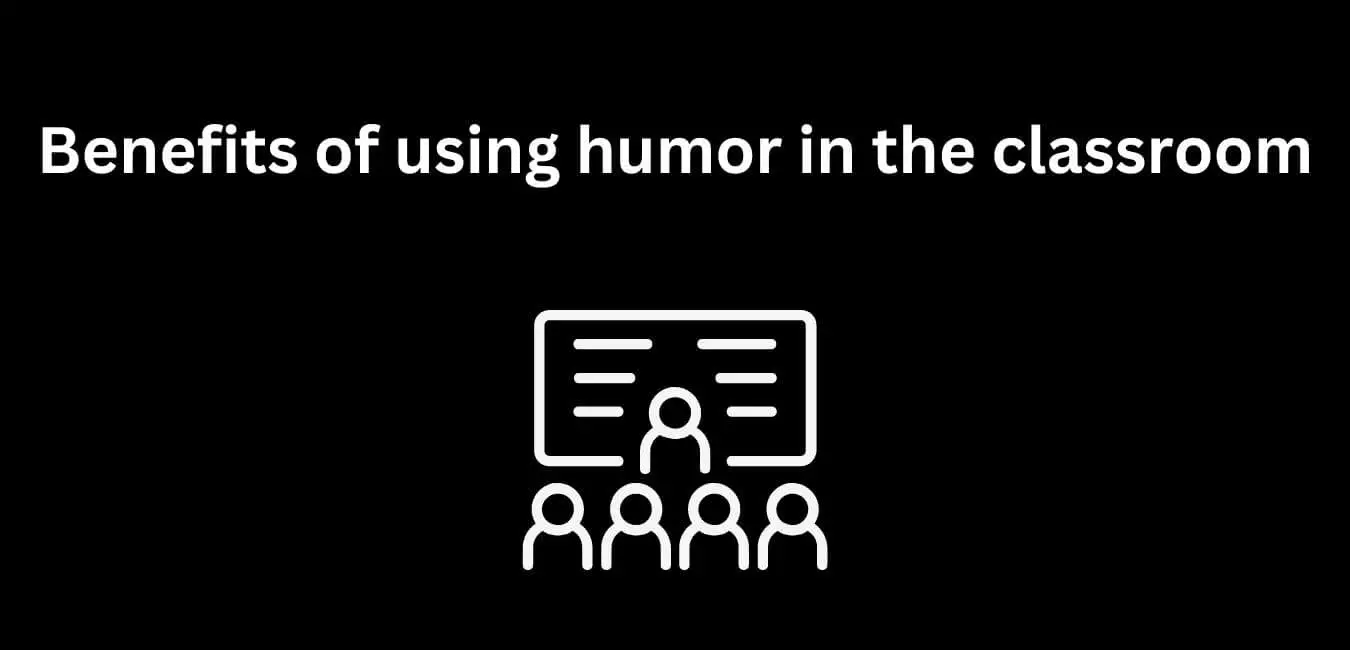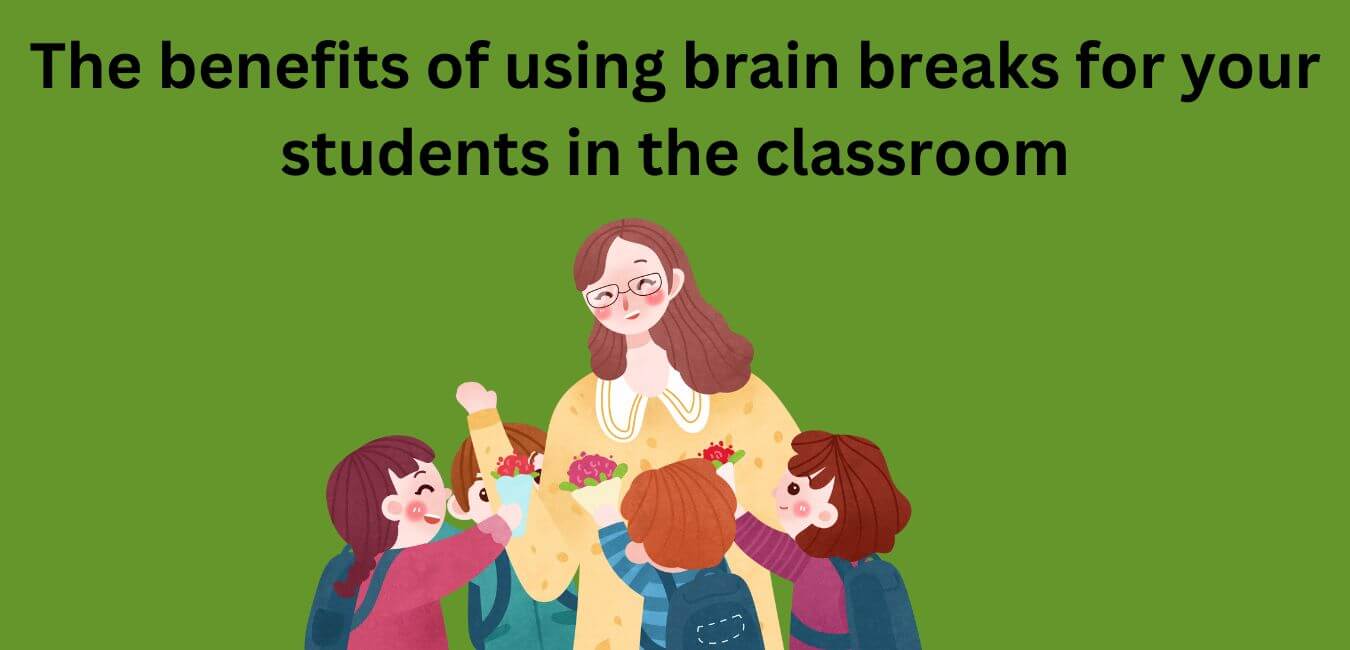It is no secret that developing empathy in students is important. Empathy allows for understanding and connection with others, which is essential in a society where people are so diverse. However, empathy is not something that comes naturally to all students. It needs to be cultivated.
One way to develop empathy in students is to create a classroom community in which students feel safe sharing their thoughts and feelings. In this environment, teachers can model empathy by listening attentively and responding thoughtfully to students. Teachers can also help students develop empathy by teaching them about different cultures and religions and by discussing social justice issues. Finally, teachers can encourage students to reflect on their own thoughts and feelings and to consider how they might have reacted in a similar situation.
The purpose of this article is to help you develop empathy in your students.
Developing Empathy in Students
In this section, we will explore the things that you can do to promote the development of empathy in your classroom. Below are some of them:
1. The importance of modeling empathy.
As teachers, we know that empathy is an important skill for our students to develop. Empathy allows us to understand and share the feelings of others, which can help us build relationships and resolve conflicts. But how can we model empathy for our students?
One way is to reflect on your own feelings and reactions. When you share your thoughts and feelings honestly with your students, they will see that you are someone who is willing to be open and vulnerable. This can help them feel safe in sharing their own thoughts and feelings with you.
Another way to model empathy is to be aware of your body language and tone of voice. When you are calm and positive, it will send a message to your students that they can trust you. On the other hand, if you are angry or frustrated, your students will likely respond in a similar way.
In all, when students see that their teachers are empathetic, it can help them feel more comfortable opening up about their own feelings and experiences. This can create a safe space for students to explore their emotions and figure out how they want to deal with them.
2. Helping students identify their feelings.
When students can identify their feelings, they are better able to understand and empathize with the feelings of others. In a world where it is all too easy to become desensitized to the pain and suffering of others, teaching empathy has never been more important.
There are many reasons why helping students identify their feelings is important in building empathy in students. For one, when students can label their own emotions, they are better equipped to deal with them. They learn how to express themselves in a healthy way, and they also learn how to listen to and respond empathically to the emotions of others.
In addition, when students learn about empathy, they develop a stronger sense of social responsibility. They come to understand that it is not enough just to feel compassion for others; they need to take action as well.
3. Teaching students how to respond to difficult situations.
One of the most important skills that students can learn is how to respond to difficult situations. This skill can help them in their personal lives, as well as in their interactions with others. One of the benefits of teaching students how to respond to difficult situations is that it can help build empathy in them.
Empathy is the ability to understand and share the feelings of another person. It is an important skill for both personal and professional relationships. When students have empathy, they are better able to understand and relate to others, which can lead to more positive relationships.
There are several ways that teachers can help students develop empathy. One way is by teaching them how to respond to difficult situations. When students are faced with a challenging situation, they can learn how to think about things from the other person’s perspective and how to express compassion.
4. Teach empathy to your students.
One of the most important skills a person can have is empathy. Empathy allows people to understand and share the feelings of others. It is the ability to feel what someone else is feeling. This skill is important in personal relationships, as well as in the workplace.
There are many reasons why teaching empathy to your students is important. One reason is that it can help students develop social skills. When students can understand how others are feeling, they can better communicate with them. This can lead to more positive relationships with classmates and peers.
Empathy can also help students better understand themselves. When they know how to put themselves in other people’s shoes, they can begin to see their own behavior from a different perspective. This can help them make better decisions and become more self-aware.
Finally, teaching empathy can help students become more compassionate individuals.
Practice empathy with your students.
5. Set clear expectations on ethics and empathy.
In order to promote empathy among students, it is important to have clear expectations when it comes to ethics. When students know what is expected of them, they are more likely to act with integrity and respect.
Restorative justice practices and peer mediation can also help resolve conflicts in a fair and constructive way, which ultimately builds trust and respect between individuals. By setting clear ethical guidelines, we can help create a community that is accountable and respectful towards each other.
6. Collaborate with families to model empathy for students.
Building empathy in students is essential to their success in life. However, it can be difficult to do this on your own. Collaborating with families to model empathy for students can be a helpful way to help your students develop the skill. Here are some reasons why collaborating with families is beneficial:
a. Families are often more familiar with their children than teachers are, which gives them a unique perspective on how to handle different situations.
b. Families are also more likely to be supportive of their children’s emotions, which can help build resilience in students.
c. By modeling empathy for students, you will encourage them to do the same for others. This will help them become better problem solvers and communicators.
7. Teach students to notice and reject stereotypes.
Teach your students to notice and reject stereotypes when building empathy in them. By doing so, you will help them learn to understand others better and build positive relationships. Here are six reasons why teaching your students to notice and reject stereotypes is important:
a. It helps them develop a deeper understanding of other people.
When students are able to see the individualized aspects of other people, they become more empathetic. This means that they can better understand the emotions and experiences of others, which can make interactions more productive and enjoyable.
b. It allows them to be more tolerant of others.
If students are aware of the implicit biases that lurk within all of us, they will be less likely to react negatively towards individuals based on those biases. This can help them build trust with others and make friendships more meaningful.
c. It helps them become more compassionate towards others.
When students are able to see the individualized aspects of other people, they will be more likely to extend compassion towards all people. This can help them to understand that others have their own life experiences and personal histories, which can help them to have better relationships with those individuals.
d. And it helps them develop the ability to empathize with others. When individuals are able to envision themselves in the shoes of other people, they can better understand how they feel and what they would want out of a situation. This can help them get along with others better and build stronger relationships.
e. And it helps them develop leadership skills. Individuals who are able to understand how others feel can be better leaders. They will be more empathetic when interacting with other individuals, and they will know how to encourage others, which can help them steer their team in the right direction.
f. It can help them fight against depression. Individuals who have the ability to empathize with others tend to have less depression. They are able to understand how other people feel and why they are depressed, which makes it easier for them to deal with their own feelings and emotions.
8. Teach respect and value differences in your classroom.
When it comes to building empathy in your students, one of the most important things you can do is teach them respect and value differences. This will help them understand that everyone has different beliefs and customs, which can help build stronger relationships and create a more tolerant society. Here are some tips on how to do just that in your classroom:
a. Start early by teaching your students about respect and value differences at an early age. This way, they will be more likely to understand and empathize with others when they encounter these differences later in life.
b. Make sure you are modeling respectful behavior yourself. If you want your students to emulate this behavior, then it’s important that you set an example yourself!
c. Talk about different cultures and their customs with your students. This will help them learn about different cultures and make them more accepting of other people.
d. Encourage students to take another person’s perspective. This will help your students understand that everyone is different in their own way, even though they are all human beings.
9. Teach students to widen their circle of concern.
In order to build empathy in your students, it is important to help them widen their circle of concern. This can be done by teaching them how to identify and understand the feelings of others, as well as how to share their own feelings.
When students are able to do this, they will be better equipped to understand and empathize with others. To help students empathize, it is important to teach them how to recognize differences.
10. Teach active listening to your students.
Active listening is a skill that can be used in many different situations, from classroom discussions to listening to your parents or friends. It’s a great way to build empathy in your students and help them learn how to communicate effectively. Here are six reasons why you should start teaching active listening to your students:
a. It can help build trust between students and educators. When students feel that they can open up and share their thoughts and feelings with teachers, it builds trust and relationships. Active listening also helps educators understand their students better, which can lead to more effective communication.
b. It can improve student outcomes. Studies have shown that active listeners outperform non-listeners on measures of reading, math achievement, and problem-solving skills. By helping our students develop these key skills, we’re helping them succeed in school and beyond. 3) It has been proven to improve student motivation. When students feel heard and understood, they are motivated to do their best. This can lead to better grades and a more positive outlook on life.
c. It can help them learn critical skills. Active listening is an important skill that can help students develop their social, emotional, and decision-making skills. The ability to listen to others and respond appropriately has a direct impact on students’ ability to form meaningful relationships with the people around them.
d. It’s fun! No one likes goody-two-shoes. It’s counterintuitive, but students who are allowed to express their opinions appropriately will often feel more confident and engaged in class.
e. It makes them more motivated to be respectful. Students who practice active listening regularly will develop a more positive attitude toward others and their relationships with teachers and peers. This can motivate students to do their best, even when they are in difficult situations.
f. It can lead to better relationships with teachers and other students. Good listeners are more likely to feel connected, comfortable, and happy with their peers. This can help students develop a sense of belonging and community at school, which is an important part of developing positive relationships with adults.
11. Teach your students to manage difficult feelings like sadness, anger, and frustration.
There are many benefits to teaching students how to manage difficult feelings. This can build their empathy and emotional intelligence, which can help them in both their personal and professional lives. Here are six reasons why you should teach your students to manage difficult emotions:
a. It will help them develop coping skills. When something challenging or upsetting happens, it is natural to feel overwhelmed and upset. Teaching your students how to cope with these feelings will help them handle difficult situations more effectively.
b. It will build their resilience. Difficult experiences can cause us to grow stronger as individuals if we learn how to manage our emotions well. This makes us more resilient when faced with similar challenges in the future.
c. It will improve their relationships. When we are able to identify and express our feelings openly, our relationships become much stronger. This is true whether we are talking to our parents, siblings, or friends.
d. It will improve their academic performance. When we struggle to express ourselves in class, it can be hard to focus on what is being said. This can lead to us missing details and therefore struggling to retain information. The more we learn to express our feelings, the easier it will be for us to recall things we have read or heard.
e. It will increase their self-esteem. When we don’t feel understood or accepted, it is hard to feel like a whole and complete person. This can make us feel bad about ourselves, which makes us withdraw from others. It also leads us to become more dependent on others.
f. It can improve their social skills. When we are struggling to express our feelings, it is hard to connect with others. We struggle to understand the way they think and feel, which can make us feel uncomfortable in new situations.
Teaching your students to manage difficult feelings like sadness, anger, and frustration is a great way to build their empathy levels. By understanding how these emotions work and why they are important, students will be better equipped to manage them in an appropriate way. This is an effective way to build empathy in your students.
12. Teach students to navigate social situations ethically and fairly.
When it comes to navigating social situations, it’s important for students to be aware of the ethical and fair ways to behave. This can help them build empathy and understanding for others, which in turn can improve their relationships. Here are some reasons why teaching your students about ethics in social situations is important:
a. It can help them develop better judgment skills.
b. It can teach them how to handle difficult conversations and interactions.
c. It can give them the confidence they need to stand up for themselves when necessary.
d. It can help them become more accepting and tolerant of different viewpoints.
e. It can help them display more integrity and respect toward others.
f. It can teach them how their actions affect the people around them, whether they intend to or not.
g. It can help them develop better relationships with their friends and family.
h. It can teach them how to deal with their own emotions, whether they are happy, sad, or angry.
Some obstacles that may prevent empathy development
Developing students’ empathy does not always go smoothly. You and your students will surely encounter some challenges. The following are some of the obstacles to empathy development in students:
1. Stereotypes
Stereotypes are obstacles to the development of empathy in your students. They can prevent them from understanding other people’s experiences and feelings, which can lead to unfair judgments and a lack of compassion.
Stereotypes interfere with our ability to see people as individuals. We tend to see people in groups and make assumptions about their characters based on what we know about them. This is especially true for stereotypes about groups that we don’t belong to (like race or ethnicity).
Stereotypes close our minds to the possibility that others could have different perspectives or experience things differently than we do. We may become so entrenched in our own views that we cannot imagine how someone else could see the situation at hand in a different way.
2. Poor Listening
Poor listening is one of the most common obstacles to students’ developing empathy. It can impede our ability to understand and connect with others, which can lead to feelings of isolation and loneliness. In addition, it can lead to misunderstandings, conflict, and even violence. Here are some reasons why poor listening is such a problem:
a. Poor listening diminishes our ability to empathize with others. When we are not able to understand what someone is saying, we cannot feel their pain or frustration. This limits our ability to develop compassionate relationships and makes it difficult to resolve conflicts peacefully.
b. Lack of communication also leads to problems with understanding complex ideas or concepts. When we don’t listen carefully enough, we may miss important details or get confused about the complex message being conveyed.
2. Fear
There are many obstacles that prevent the development of empathy in students. Fear is one of the most common ones. Fear can impede empathy because it can lead to feelings of isolation, vulnerability, and panic.
When these feelings are strong, they can keep people from feeling close to others or from empathizing with their feelings. This can have a negative impact on social interaction and communication skills. By understanding why fear impedes empathy development, educators can help their students develop more compassion and understanding for others.
3. Anti-social Personality Disorder
Anti-social personality disorder (ASPD) is a psychiatric disorder characterized by a pervasive pattern of disregard for others that leads to social and occupational impairment. People with ASPD are often difficult to get along with, have few friends, and struggle in their relationships. People with ASPD are also less likely to feel empathy for other people, which can make it difficult for them to understand and empathize with the experiences of other people.
Empathy is important because it helps us understand the feelings of others, which can help us build relationships and cooperate effectively. If students struggle to develop empathy in class, it can be difficult for them to learn effectively and become engaged in class discussions. This can lead to lower grades and frustration on the part of students and educators alike.
4. Narcissistic Personality Disorder
There’s no question that narcissistic personality disorder (NPD) is a serious mental condition. In fact, it’s considered one of the most disabling psychiatric disorders. People with NPD tend to have an inflated sense of their own importance and self-esteem, as well as a lack of empathy for others.
This can make it difficult for them to develop relationships and get along with others. In addition, people with NPD often have a very high need for admiration and attention. This can make it difficult for them to succeed in school, work, or any other social situation.
Despite the many obstacles that people with NPD face, there are still some things that can help them improve their ability to empathize with others. First and foremost, they need to be aware of the symptoms of NPD and seek professional help if they experience them.
5. Compassion Fatigue and Burnout
Compassion fatigue and burnout are two obstacles that can prevent students from developing empathy. These conditions cause a depletion of energy and motivation, making it difficult for people to feel compassion for others. This can often lead to feelings of detachment from others and a decreased desire to help them.
When these emotions build up over time, they can lead to burnout and compassion fatigue. Each of these conditions presents its own set of challenges, but understanding them and working to address them is key if we want our students to be able to empathize effectively.
Conclusion
When it comes to developing empathy in students, there are many obstacles that must be overcome. One obstacle is that many students do not have experience of what it is like to feel another person’s emotions. Additionally, some students may be too self-centered or focused on their own concerns to truly understand another person’s experience. It can also be difficult for teachers to initiate and sustain empathy conversations with their students. However, by understanding these obstacles and taking a proactive approach, educators can help their students develop empathy skills and become better communicators overall.
















